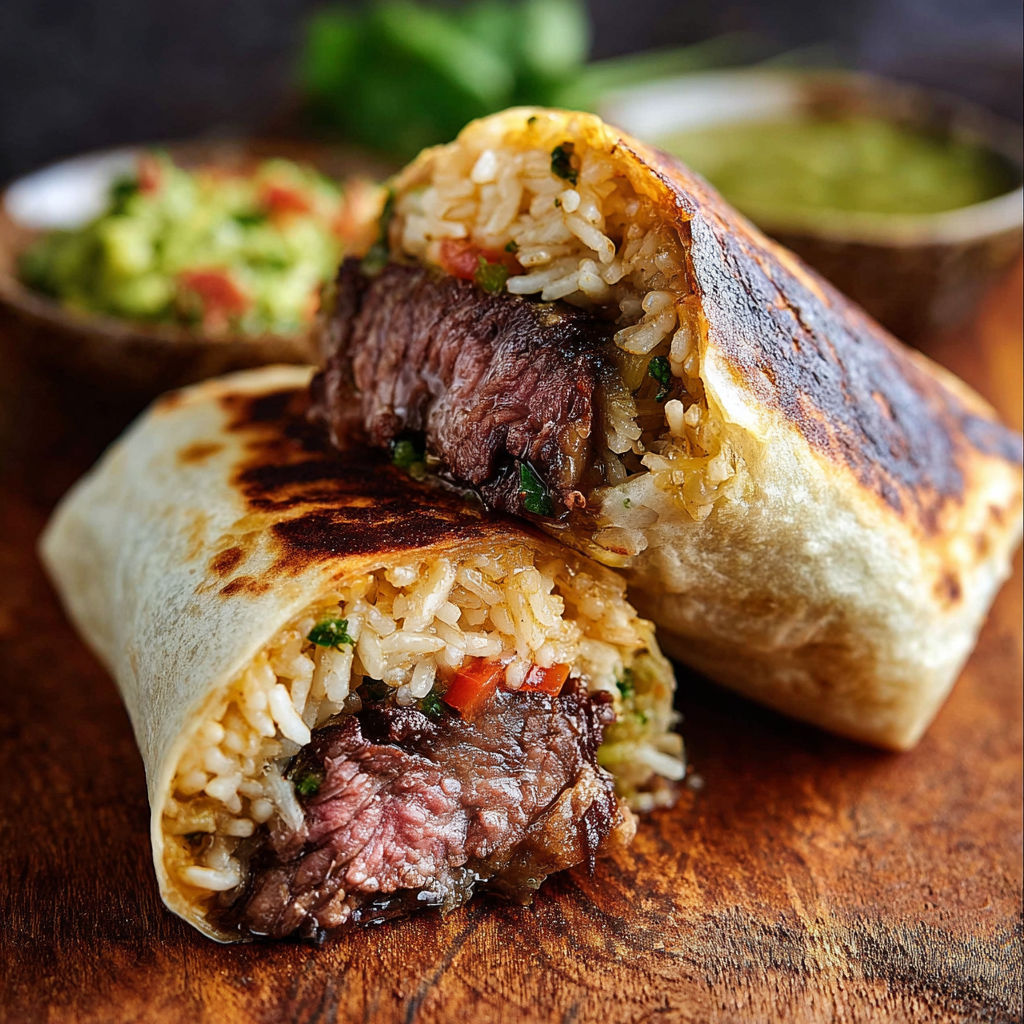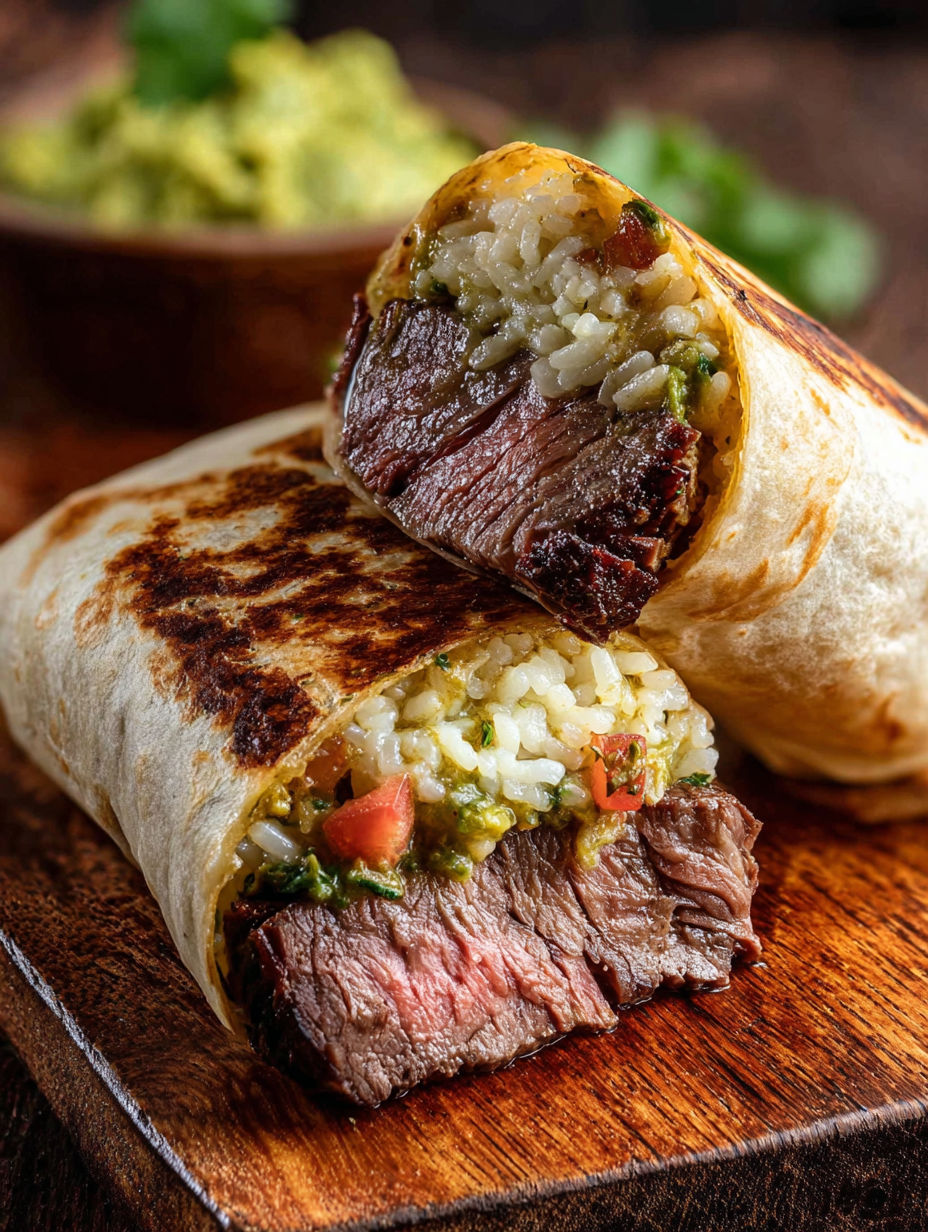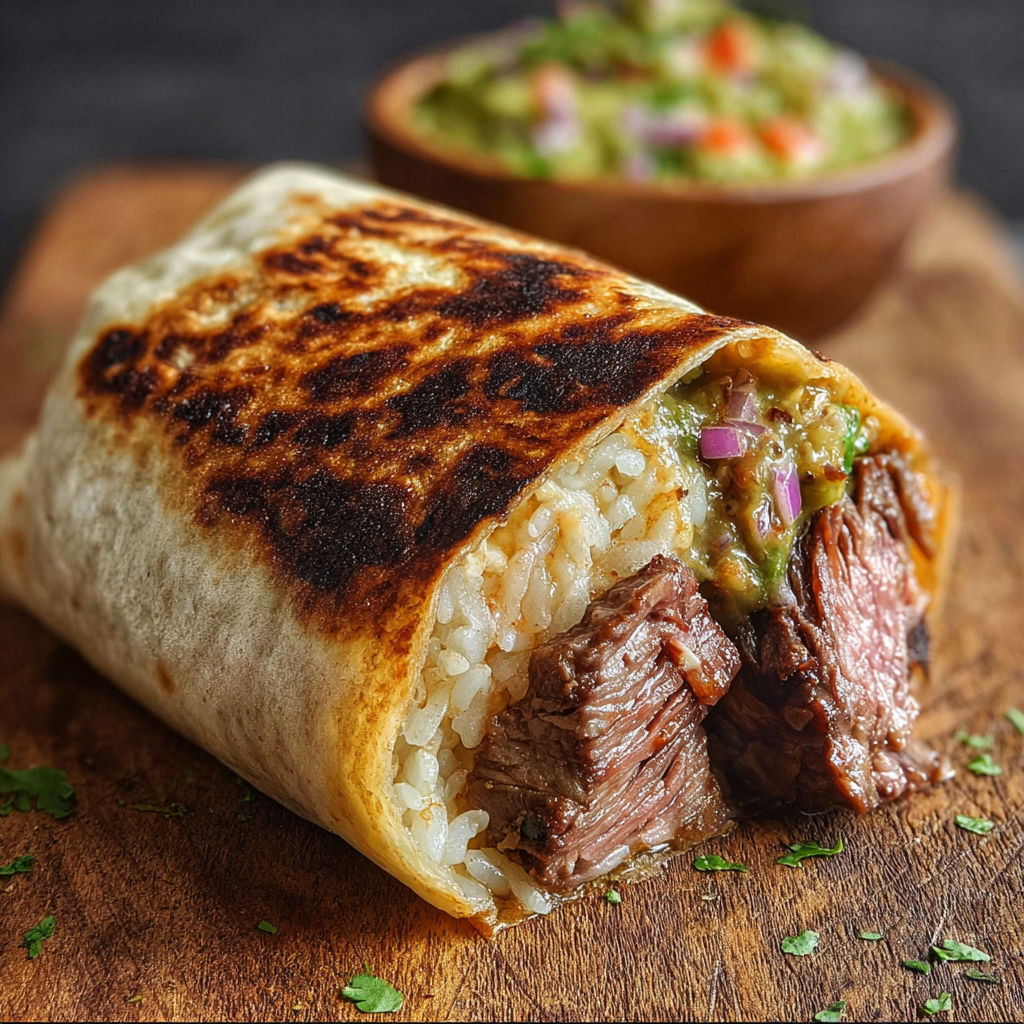 Pin
Pin
This smoked beef rib burrito transforms leftover barbecue into something extraordinary. The combination of tender, hickory-smoked beef ribs with fresh salsa verde and melty Jack cheese creates a fusion masterpiece that bridges Texas barbecue and Mexican cuisine. The lengthy smoking process is worth every minute when you bite into these flavor-packed burritos.
I developed this recipe during a weekend cookout when we had leftover smoked beef ribs. Rather than simply reheating them, I decided to transform them into these burritos. My barbecue buddies now request these whenever I fire up the smoker for ribs.
- Beef ribs with silver skin removed crucial for proper smoke penetration and tenderness
- Yellow mustard acts as a binder without affecting flavor helps seasonings adhere perfectly
- Barbecue beef seasoning creates the perfect bark choose one with balanced salt pepper and garlic
- Large flour tortillas must be 12inch size for proper filling capacity
- White rice provides perfect neutral base to complement the smoky meat
- Refried beans add creamy texture and traditional flavor
- Jack cheese melts beautifully without overwhelming the beef flavor
- Fresh tomatillos for salsa verde provide bright acidity to cut through the richness
- Serrano pepper adds just the right heat level without dominating
- Hickory wood chunks impart classic barbecue flavor that pairs perfectly with beef
How To Make Smoked Beef Rib Burritos
- Prepare the ribs
- Apply a thin layer of yellow mustard to all surfaces of your beef ribs after removing silver skin. This acts as a glue for your seasoning. Generously coat with barbecue beef seasoning, pressing it into the meat to ensure it adheres completely. Let sit at room temperature for 30 minutes while preparing your smoker.
- Smoke the ribs
- Set smoker to 120°C with indirect heat and add hickory wood chunks for smoke. Place seasoned ribs on the grate bone side down and close lid. Maintain temperature and spritz with apple cider vinegar every 45 minutes to keep the meat moist and help develop bark. Continue smoking until internal temperature reaches 77°C, approximately 4.5 hours.
- Wrap and finish cooking
- Once ribs reach target temperature, place them on a large sheet of butcher paper with several pats of unsalted butter. Wrap tightly to seal in moisture and return to smoker for about 2 more hours. The ribs are done when a probe slides in with no resistance, feeling like butter.
- Rest properly
- Remove wrapped ribs from smoker and place in a cooler lined with towels for 1-2 hours. This resting period is crucial for allowing juices to redistribute through the meat, ensuring maximum tenderness and flavor.
- Prepare salsa verde
- While ribs rest, roast tomatillos, Serrano pepper, onion, and garlic until charred and softened. Cool slightly then blend with fresh cilantro, lime juice, and salt until smooth but still slightly textured. This fresh salsa provides bright contrast to the rich smoked meat.
- Shred the beef
- Unwrap rested ribs and pull meat from bones. Shred by hand for larger chunks or use a cleaver for finer texture. The meat should pull apart easily with minimal effort. Reserve any accumulated juices to mix back into the meat for moisture.
- Assemble burritos
- Heat tortillas on a griddle until pliable. Layer with warm refried beans, cooked rice, generous portion of shredded beef, homemade salsa verde, and plenty of Jack cheese. Fold sides in and roll tightly, placing seam side down.
- Toast to perfection
- Return assembled burritos to hot griddle and toast each side for 60-90 seconds until golden brown and slightly crispy. This seals the burrito and adds textural contrast to the soft interior.
The secret to these burritos is patience during the smoking process. I once tried to rush it by increasing the temperature, and the results were noticeably tougher. The long, slow cook at 120°C allows the fat to render perfectly while the collagen converts to gelatin, creating that melt-in-your-mouth texture that makes these burritos extraordinary.
Selecting The Right Beef Ribs
For this recipe, focus on finding beef back ribs or plate ribs with good marbling. Plate ribs generally have more meat but can be harder to find. Ask your butcher for a rack with at least 3-4 bones that has been minimally trimmed. The layer of fat on top is essential for keeping the meat moist during the long smoking process. Avoid ribs that look too clean or lean as they may dry out during cooking.

Make-Ahead And Storage Tips
These burritos are ideal for batch preparation. You can smoke the beef ribs up to three days ahead and refrigerate the shredded meat. When ready to serve, simply reheat the meat with a splash of beef broth to restore moisture. For longer storage, individually wrap assembled but untoasted burritos in foil, then place in freezer bags for up to three months. Reheat frozen burritos in a 350°F oven for 25-30 minutes until heated through, then finish on a hot griddle for the crispy exterior.
Variation Ideas
While the basic recipe creates an incredible burrito, you can customize endlessly based on preferences. Try adding pickled red onions for tanginess, substitute cilantro lime rice for more flavor, or incorporate roasted poblano peppers for smokier heat. For a breakfast version, add scrambled eggs and serve with avocado slices. If you prefer a spicier profile, mix some chipotle in adobo into your beef after shredding or use pepper jack cheese instead of regular Jack.

Recipe FAQs
- → Can I substitute the beef ribs with another cut of meat?
Yes, you can substitute beef ribs with beef brisket, chuck roast, or even pork shoulder. Each will provide a different flavor profile but will work well with the smoking technique. Just adjust cooking times according to the cut - brisket typically takes 1-1.5 hours per pound, while chuck roast needs about 5-6 hours total.
- → What if I don't have a smoker?
Without a smoker, you can use a charcoal grill with indirect heat and wood chips in a foil pouch for smoke. Alternatively, slow-cook the ribs in an oven at 275°F (135°C) with liquid smoke added to your rub for a smoky flavor, then finish by broiling to develop a crust.
- → Can I make the salsa verde ahead of time?
Absolutely! Salsa verde actually improves in flavor when made 1-2 days in advance. Store it in an airtight container in the refrigerator for up to 5 days. The acidity from the lime juice helps preserve it while allowing the flavors to meld together beautifully.
- → How spicy is this burrito?
With one Serrano pepper in the salsa verde, this burrito has a mild-to-medium heat level. For a milder version, remove the seeds from the Serrano or substitute with a jalapeño. To increase the spice, add an extra Serrano or include some of the pepper seeds in your salsa blend.
- → What can I serve with these burritos?
These burritos pair wonderfully with Mexican-inspired sides like Mexican street corn (elote), a simple avocado salad, pickled red onions, or additional salsas for dipping. For a complete meal, add a side of Spanish rice or black beans, and perhaps some chilled Mexican beer or a margarita.
- → Why rest the meat in a cooler after smoking?
Resting the meat in a cooler (without ice) allows the juices to redistribute throughout the meat while keeping it warm. This technique, often called 'holding' in barbecue, results in more tender meat and prevents the juices from running out when you slice or shred it. The insulated environment slowly brings the meat's temperature down without cooling it too quickly.
